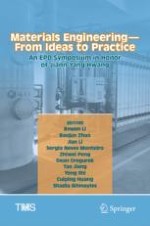2021 | OriginalPaper | Buchkapitel
Effects of Ozone on COD Reduction in Electroplating Wastewater
verfasst von : Yahui Sun, Jiann-Yang Hwang, Lili Xi, Zhixing Fu, Fujiu Nian, Yang Yang, Xin Chen
Erschienen in: Materials Engineering—From Ideas to Practice: An EPD Symposium in Honor of Jiann-Yang Hwang
Aktivieren Sie unsere intelligente Suche, um passende Fachinhalte oder Patente zu finden.
Wählen Sie Textabschnitte aus um mit Künstlicher Intelligenz passenden Patente zu finden. powered by
Markieren Sie Textabschnitte, um KI-gestützt weitere passende Inhalte zu finden. powered by
